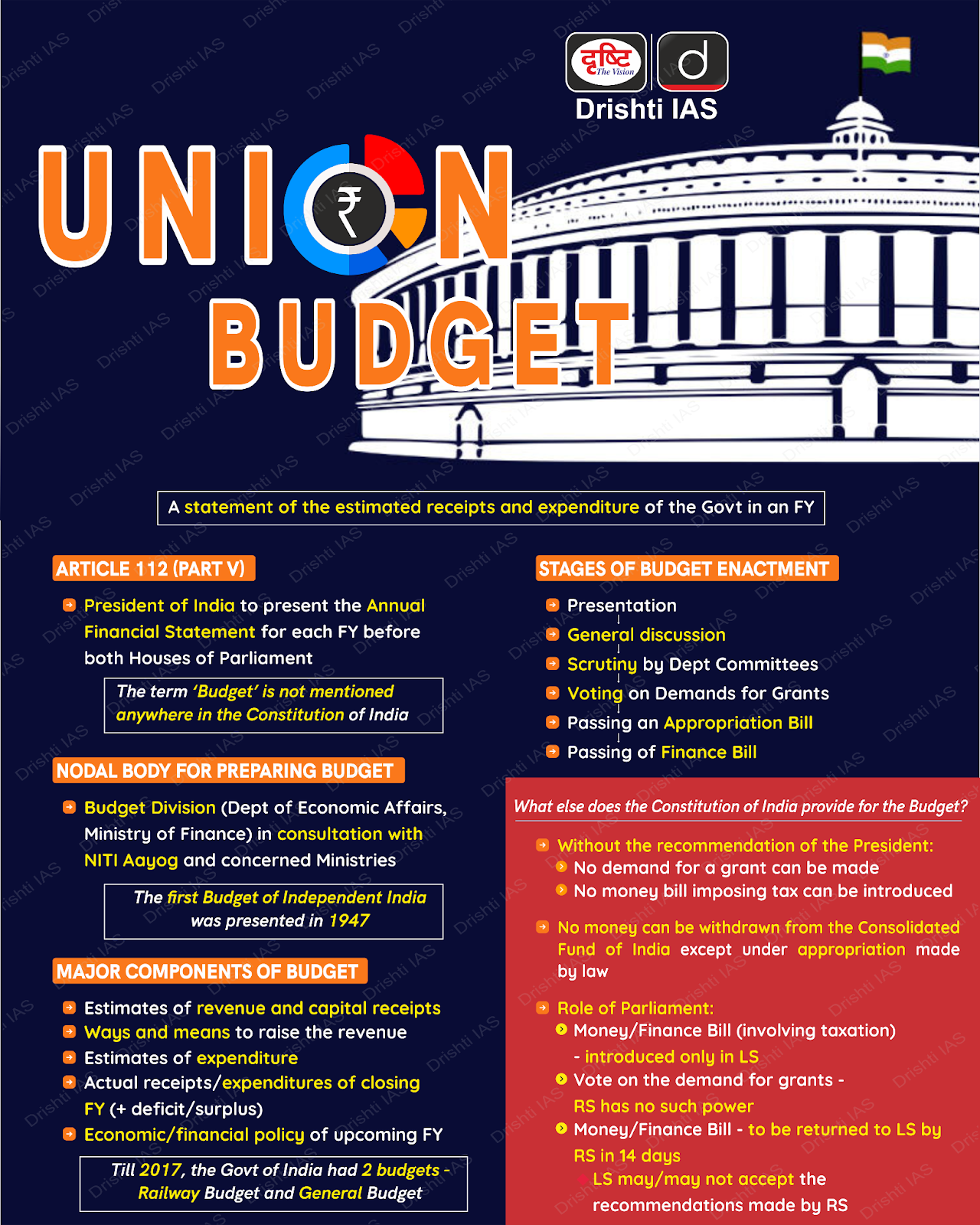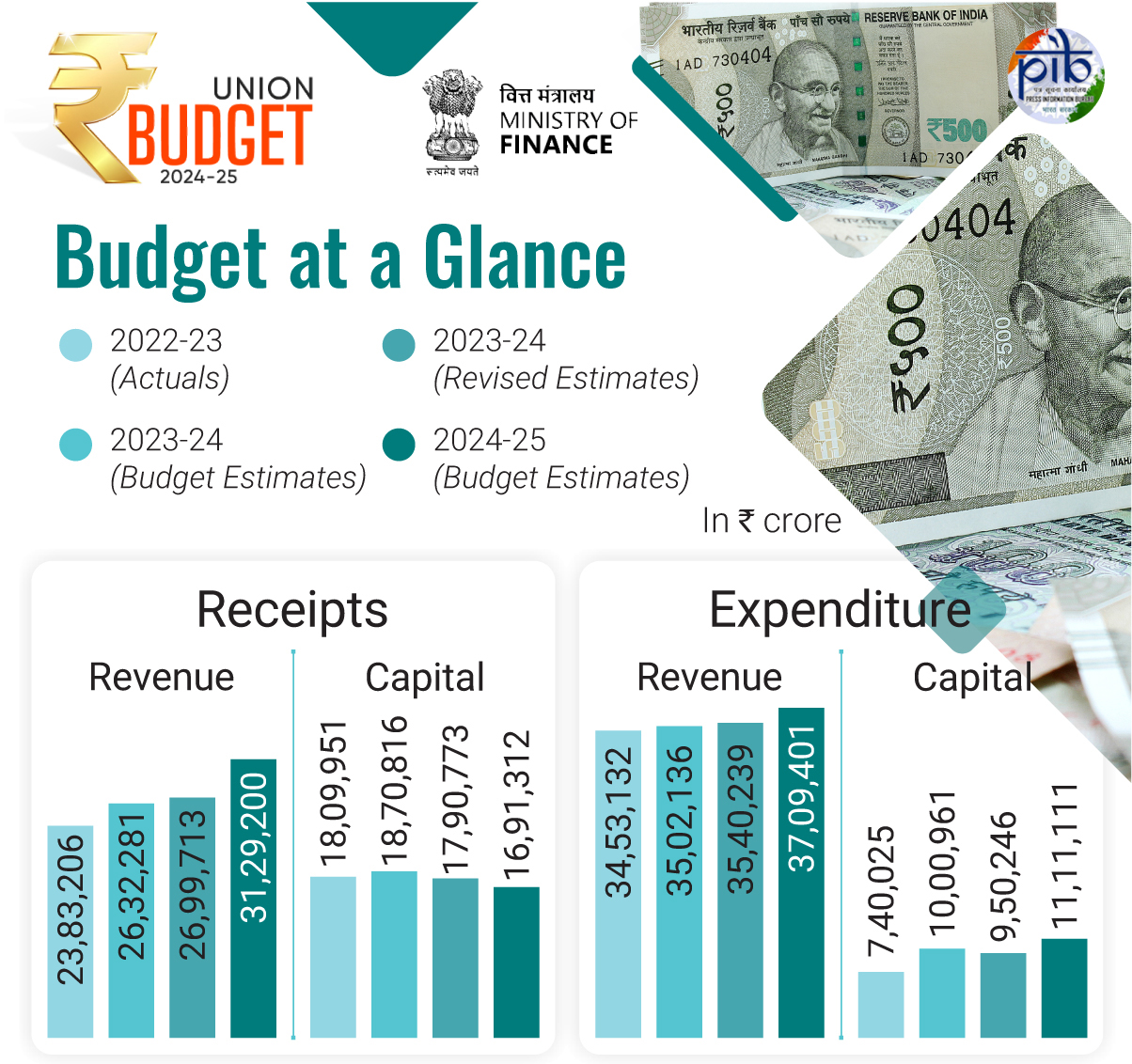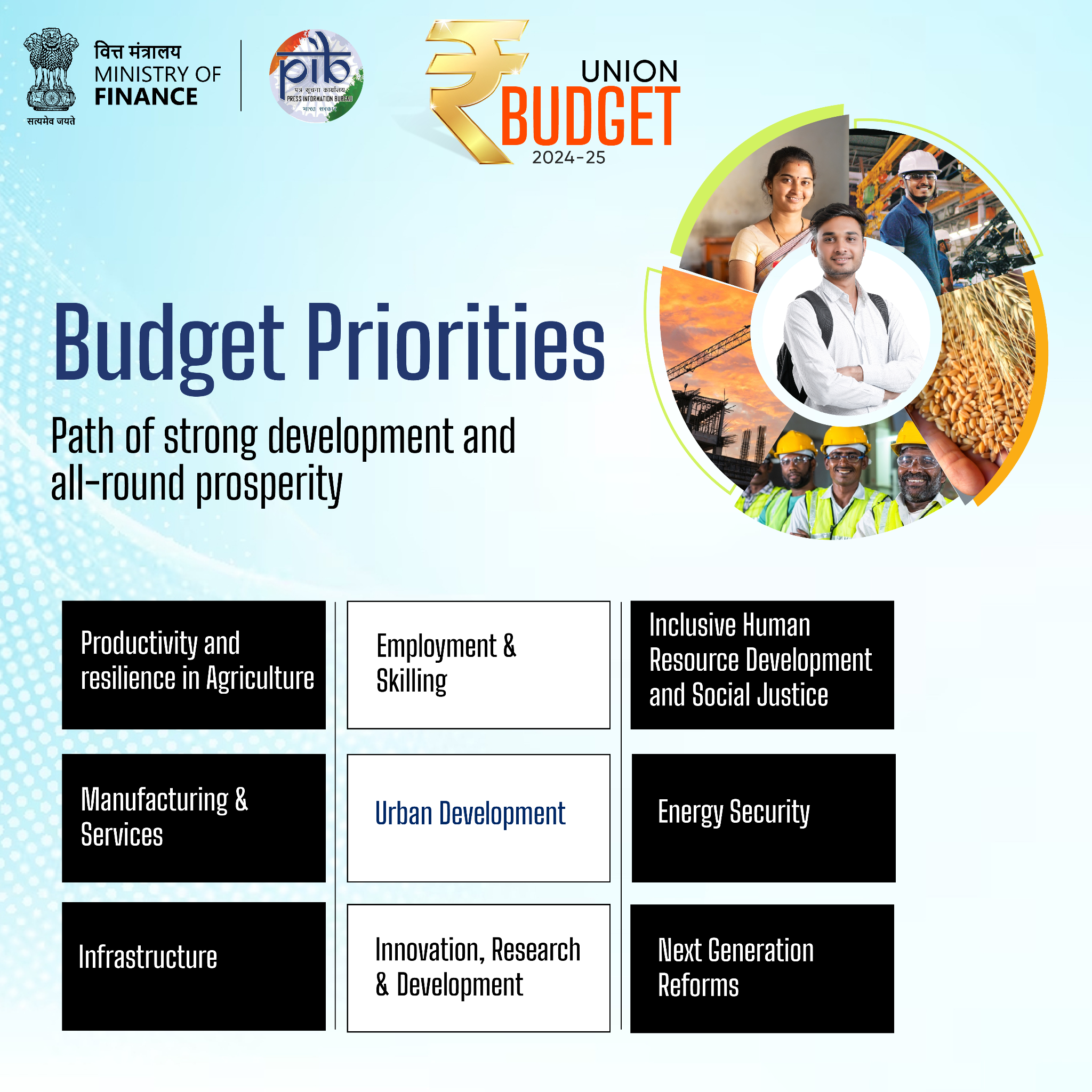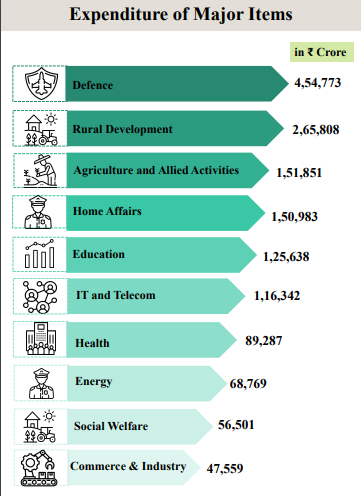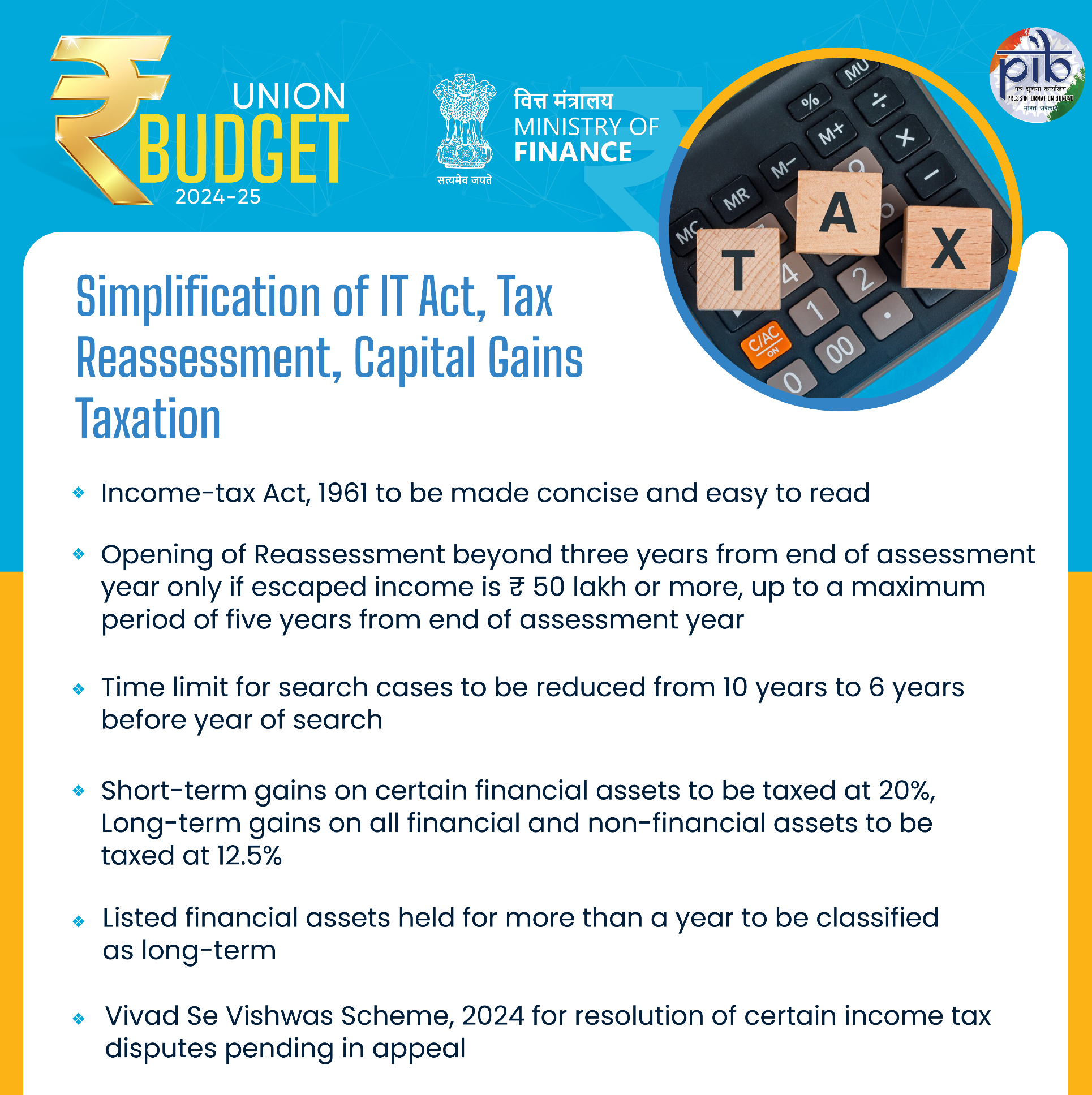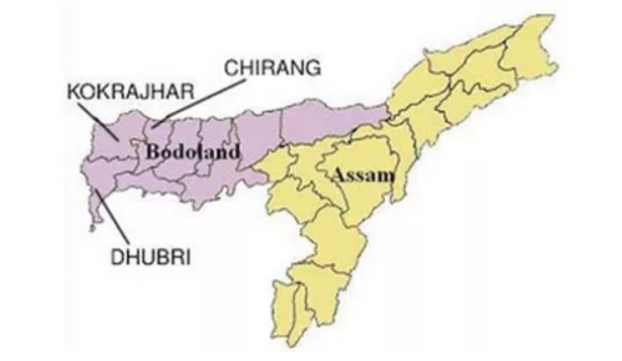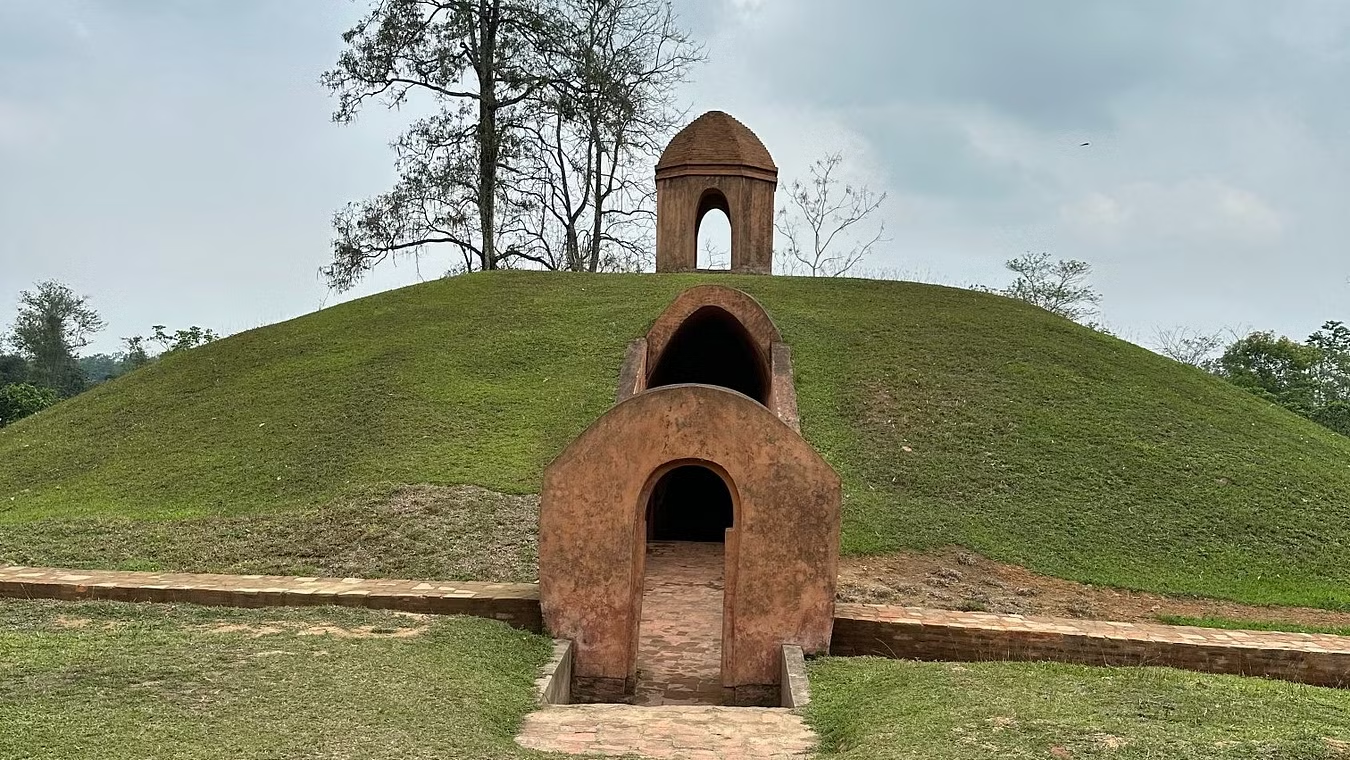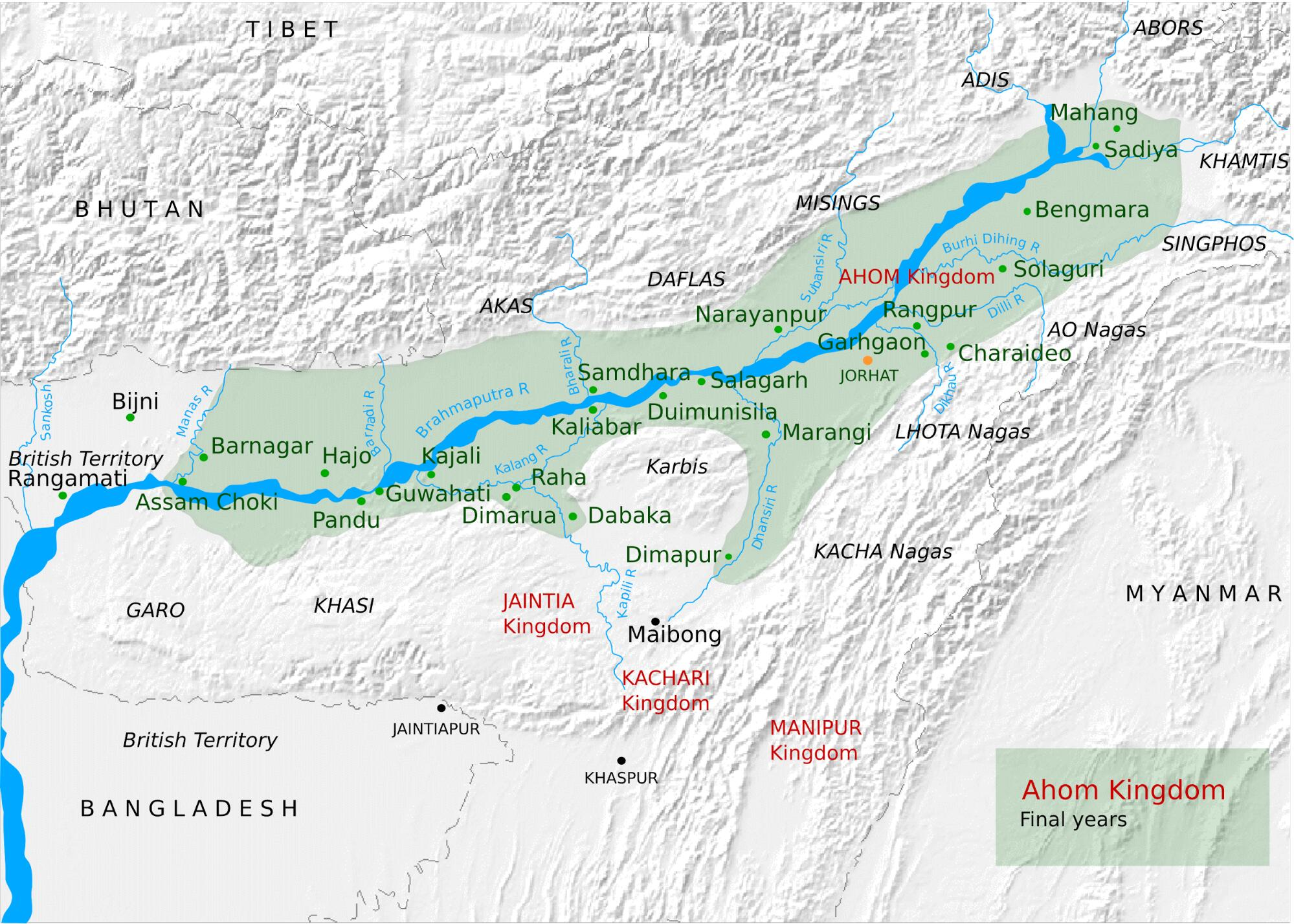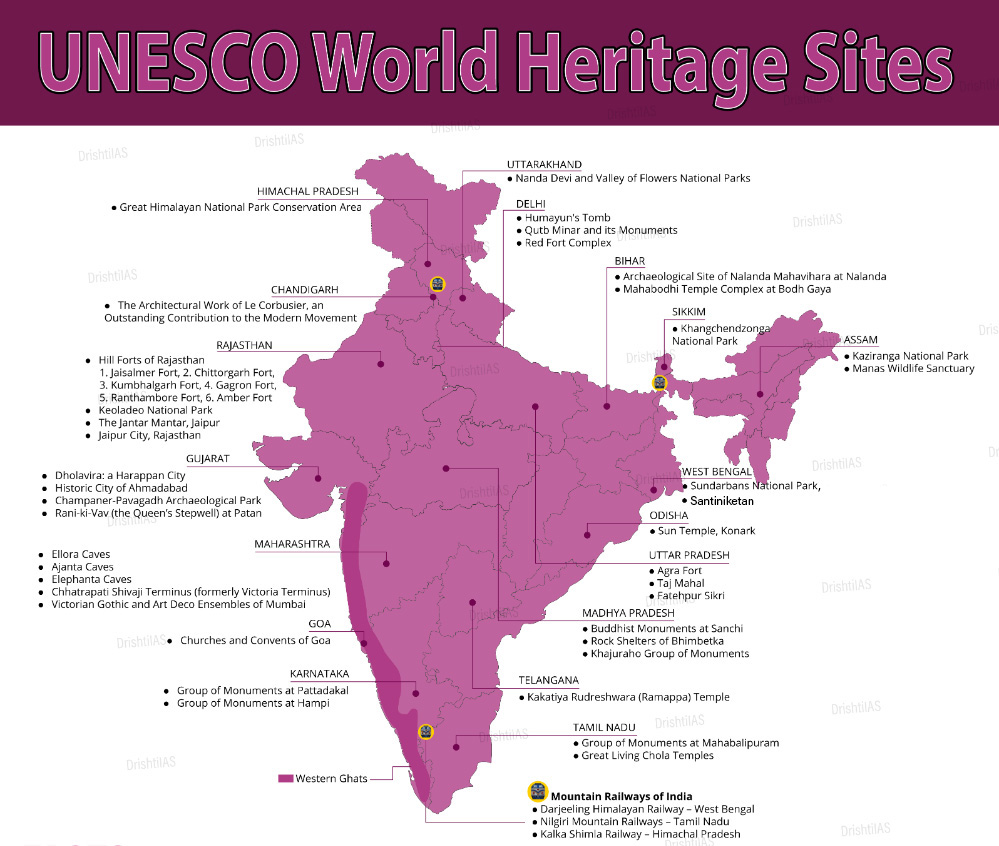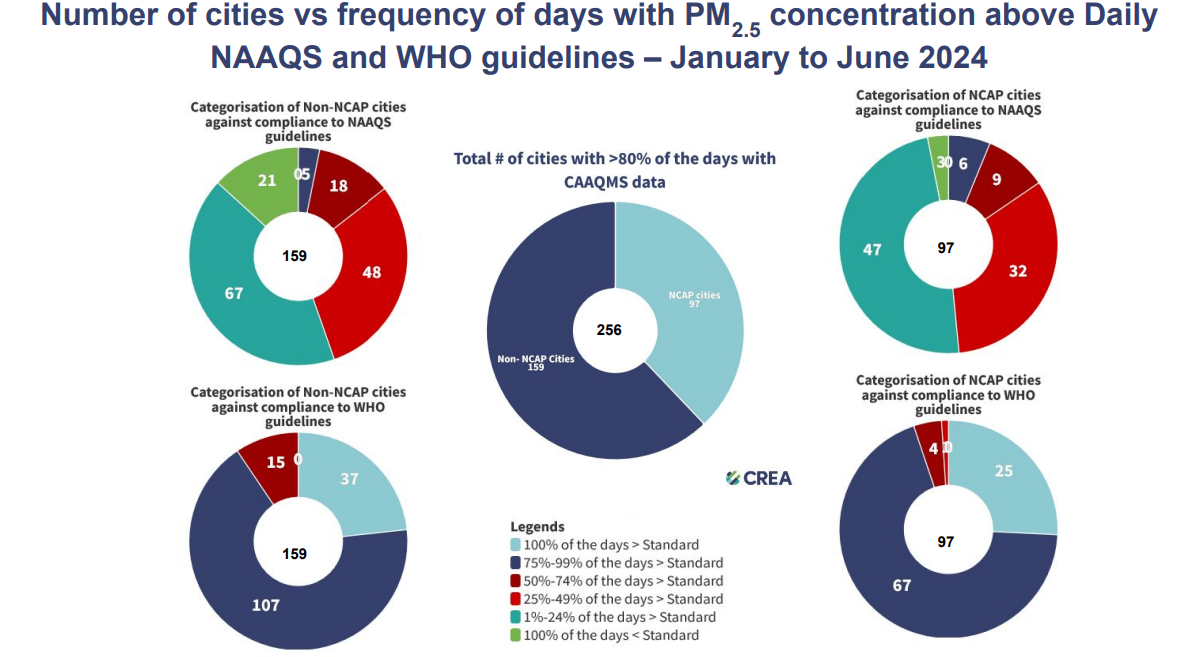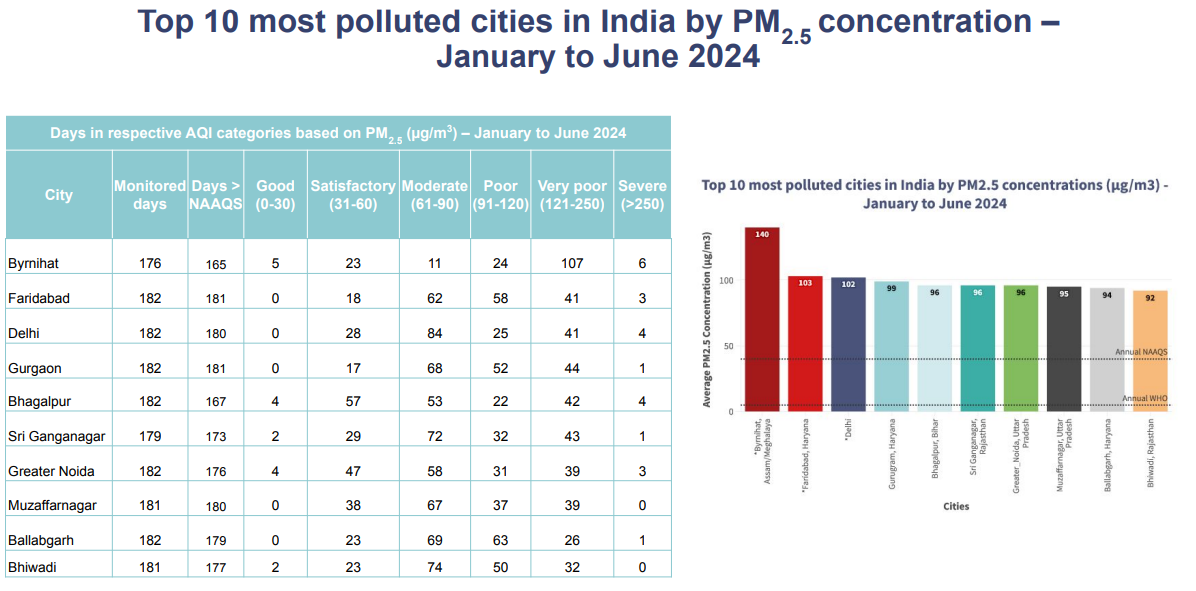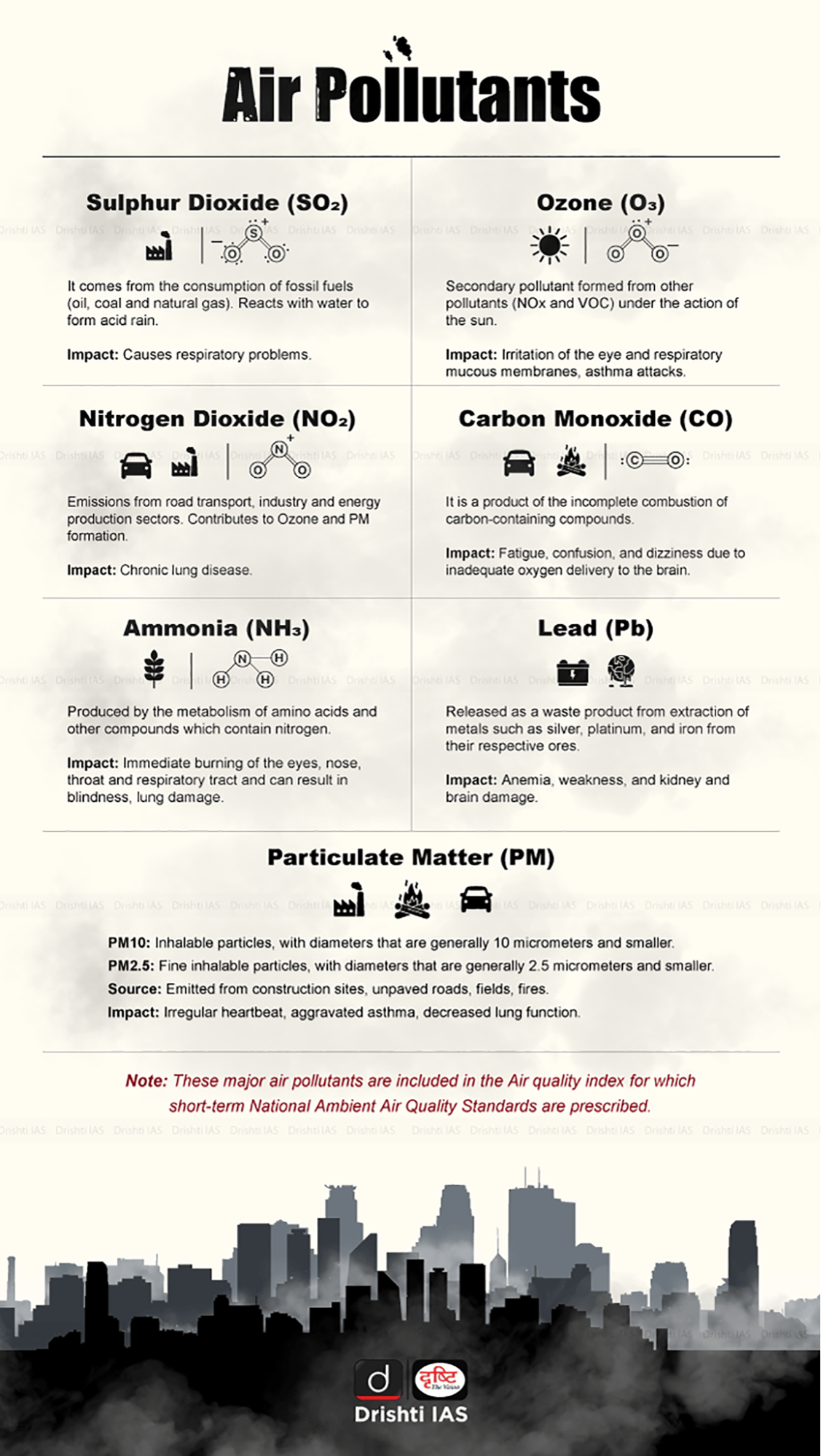Indian Economy
Economic Survey 2023-24
For Prelims: Economic Survey, Chief Economic Adviser, Current Account Deficit, Retail Inflation, Scheduled Commercial Banks, Non-performing assets, RBI’s Financial Stability Report, Gross Non-Performing Assets (GNPA) ratio, Insolvency and Bankruptcy Code, Food inflation, External debt to GDP ratio, World Bank Logistics Index, PM-AWAS-Gramin, Gram Sadak Yojana, Employees' Provident Fund Organisation, Female Labor Force Participation, Kisan Credit Cards, DigiLocker, Foreign Direct Investment.
For Mains: Key Data Related to Inflation, NPA, GDP Growth, External Debt, Unemployment Rate, Sectors Driving India’s Growth, Key Government Initiatives.
Why in News?
The Economic Survey for 2023-24 was recently tabled by the Union Minister for Finance in the parliament. It offers a comprehensive view of India's economic performance and future prospects.
What is the Economic Survey?
- About: The Economic Survey is an annual document presented by the government ahead of the Union Budget to review the state of the economy.
- It is prepared by the Economic Division of the Department of Economic Affairs in the Ministry of Finance under the supervision of the Chief Economic Adviser (currently V. Anantha Nageswaran).
- It is tabled in both houses of Parliament by the Union Finance Minister
- Purpose:
- To review the developments in the Indian economy over the previous 12 months.
- To summarise the performance on major development programs
- To highlight the policy initiatives of the government
- To analyse the economic trends and provide an outlook for the coming year
- Historical Context:
- First presented in 1950-51.
- Initially, it was a part of the budget documents.
- Became a separate volume in 1964.
- First presented in 1950-51.
What are the Key Takeaways from the Economic Survey for 2023-24?
- State of the Economy:
- Real GDP Growth: India’s real GDP grew by 8.2% in FY24, surpassing the 8% mark in three out of four quarters of FY24.
- Retail Inflation: Retail inflation decreased from 6.7% in FY23 to 5.4% in FY24.
- Current Account Deficit (CAD): The CAD improved to 0.7% of GDP in FY24 from 2.0% in FY23.
- Tax Revenue: Direct taxes contributed 55% of the total tax revenue, with indirect taxes making up the remaining 45%.
- Capital Spending: The government progressively increased capital expenditure and provided free food grains to 81.4 crore people.
- Monetary Management and Financial Intermediation – Stability is the Watchword
- Monetary Policy: The RBI maintained a steady policy repo rate at 6.5% throughout FY24.
- Consequently, Core inflation declined by around 4% from April 2022 to June 2024.
- Credit Growth: Credit disbursal by Scheduled Commercial Banks (SCBs) reached Rs 164.3 lakh crore, growing by 20.2% by March 2024.
- Banking Sector: Gross and net non-performing assets are at multi-year lows, and bank asset quality has improved.
- Data from the RBI’s Financial Stability Report of June 2024 show that the asset quality of SCBs has improved, with the Gross Non-Performing Assets (GNPA) ratio declining to 2.8% in March 2024, a 12-year low.
- Insolvency and Bankruptcy Code has been recognised as an effective solution for the twin balance sheet problem, in the last 8 years, 31,394 corporate debtors involving a value of Rs 13.9 Lakh Crore have been disposed off as of March 2024.
- Twin Balance Sheet Problem refers to heavily indebted corporations and banks burdened with bad loans, creating a vicious cycle hindering economic growth.
- Capital Markets: Primary capital markets facilitated capital formation of Rs 10.9 lakh crore, approximately 29% of the gross fixed capital formation of private and public corporates in FY23.
- Insurance and Microfinance: India is poised to become one of the fastest-growing insurance markets and has the second-largest microfinance sector globally.
- Monetary Policy: The RBI maintained a steady policy repo rate at 6.5% throughout FY24.
- Prices and Inflation – Under Control:
- Inflation Trends:
- 29 States and Union Territories recorded inflation below 6% in FY24.
- Core services inflation eased to a nine-year low in FY24
- Food inflation increased from 6.6% in FY23 to 7.5% in FY24.
- Price cuts on LPG, petrol, and diesel helped in keeping retail fuel inflation relatively low.
- Future Projections: The RBI forecasts inflation to decline to 4.5% in FY25 and 4.1% in FY26.
- Inflation Trends:
- External Sector – Stability Amid Plenty:
- Exports: India’s services exports grew by 4.9% to USD 341.1 billion in FY24, with significant contributions from IT/software and other business services.
- Remittances: India remains the top global recipient, with remittances totaling USD 120 billion in 2023.
- External Debt: India’s external debt to GDP ratio stood at 18.7% as of March 2024.
- Logistics Performance: India's rank in the World Bank Logistics Index improved to 38th in 2023 from 44th in 2014.
- Tourism: India’s share in world tourism receipts increased from 1.38% in 2021 to 1.58% in 2022.
- Medium-Term Outlook – A Growth Strategy for New India:
- Growth Strategy: To sustain a 7%+ growth rate, a tripartite compact between the Union Government, State Governments, and the private sector is required.
- Key Focus Areas: Job and skill creation, agriculture, MSME bottlenecks, green transition, and addressing the education-employment gap are crucial for medium-term growth.
- Climate Change and Energy Transition – Dealing with Trade-Offs:
- Renewable Energy: As of May 2024, non-fossil sources accounted for 45.4% of installed electricity generation capacity.
- Energy Needs: India’s energy needs are projected to grow 2 to 2.5 times by 2047.
- Investment in Clean Energy: The clean energy sector attracted investments of Rs 8.5 lakh crore between 2014 and 2023.
- Social Sector – Benefits that Empower:
- Welfare Expenditure: Grew at a CAGR of 12.8% between FY18 and FY24.
- Healthcare: Over 34.7 crore Ayushman Bharat cards have been issued.
- Housing: 2.63 crore houses constructed under PM-AWAS-Gramin in the past 9 years.
- Rural Infrastructure: 15.14 lakh km of roads constructed under the Gram Sadak Yojana since 2014-15.
- Employment and Skill Development – Towards Quality:
- Unemployment Rate: Declined to 3.2% in 2022-23.
- Net payroll additions under the Employees' Provident Fund Organisation (EPFO) have more than doubled to 13.15 million in the past five years, indicating robust growth in formal employment.
- Youth Unemployment: Fell from 17.8% in 2017-18 to 10% in 2022-23.
- Female Labor Force Participation: Rising for six consecutive years (37.0% currently).
- Gig Economy: Workforce expected to reach 2.35 crore by 2029-30.
- Unemployment Rate: Declined to 3.2% in 2022-23.
- Agriculture and Food Management
- Agricultural Growth: The sector registered an average annual growth rate of 4.18% at constant prices over the last five years.
- Credit and Micro Irrigation: Credit disbursed to agriculture amounted to Rs 22.84 lakh crore.
- 90 lakh hectares covered under micro-irrigation since 2015-16.
- Kisan Credit Cards: 7.5 crore cards issued with a Rs 9.4 lakh crore limit.
- Industry – Small and Medium Matters:
- Industrial Growth: Economic growth of 8.2% in FY24 is supported by an industrial growth rate of 9.5%.
- Pharmaceutical and Clothing Sectors: India’s pharmaceutical market is the world’s third-largest by volume, valued at USD 50 billion.
- It is the second-largest clothing manufacturer globally, with textile and apparel exports reaching Rs 2.97 lakh crore in FY24.
- Electronics Manufacturing: India’s electronics sector accounts for an estimated 3.7% of the global market share.
- Domestic production increased to Rs 8.22 lakh crore, with exports rising to Rs 1.9 lakh crore in FY23.
- Services – Fuelling Growth Opportunities:
- Sector Contribution: The services sector accounted for 55% of the economy in FY24 and grew by 7.6% during the year.
- Digital Services: India's share in global digitally delivered services exports increased to 6% in 2023.
- Globally, India’s services exports constituted 4.4% of the world's commercial services exports in 2022 & accounted for 44% of India’s total exports in FY24.
- Aviation: 15% YoY increase in total air passengers in FY24.
- E-commerce: Expected to cross USD 350 billion by 2030.
- Start-ups: Increased from around 2,000 in 2014 to approximately 31,000 in 2023.
- Infrastructure – Lifting Potential Growth:
- National Highways: The pace of National Highways construction increased from 11.7 km per day in FY14 to approximately 34 km per day by FY24.
- Railways: Capital expenditure on Railways increased by 77% over the past five years.
- Aviation: 21 new airport terminal buildings operationalised in FY24.
- Logistics: Rank in the International Shipments category improved to 22nd in 2023 from 44th in 2014.
- Space: India has 55 active space assets, including 18 communication, 9 navigation, 5 scientific, 3 meteorological, and 20 earth observation satellites.
- Digital Infrastructure: The DigiLocker platform has over 26.28 crore registered users and over 674 crore issued documents.
- Telecommunication: The overall teledensity (number of telephones per 100 population) in India increased from 75.2% in March 2014 to 85.7% in March 2024.
- The internet density also increased to 68.2% in March 2024.
- Climate Change and India:
- Current global strategies for climate change are flawed and not universally applicable.
- The Western approach does not seek to address the root of the problem, i.e., overconsumption, but rather chooses to substitute the means to achieve overconsumption.
- A one-size-fits-all approach will not work, and developing countries need to be free to choose their own pathways.
- India’s ethos emphasises a harmonious relationship with nature, in contrast to the culture of overconsumption in other parts of the developed world.
- Shifting towards ‘traditional multi-generational households’ could pave the way towards sustainable housing.
- “Mission LiFE” focuses on human-nature harmony, promoting mindful consumption rather than the overconsumption that lies at the root of the global climate change problem.
- Current global strategies for climate change are flawed and not universally applicable.
What are the Major Challenges and Recommended Solutions Outlined in the Economic Survey 2023-24?
- Key Challenges Identified:
- Global Headwinds and FDI: The prospects for Foreign Direct Investment (FDI) are not very promising due to high interest rates in developed countries, which increase the cost of funding and the opportunity cost of investing in developing nations like India.
- Additionally, industrial policies in developed countries that offer substantial subsidies for domestic investment further complicate the competitive landscape.
- Geopolitical uncertainties also pose challenges.
- China Dependency: India remains heavily dependent on China for imports, especially in the renewable energy sector.
- Furthermore, China continues to dominate the low-skill manufacturing space that India has aimed to occupy.
- AI Threat: The rise of artificial intelligence (AI) could potentially disrupt the telecommunications and Internet-driven business process outsourcing (BPO) sector, which has seen significant growth.
- Tepid Private Investment: Despite tax cuts implemented in September 2019 to boost capital formation, the corporate sector’s response has been underwhelming.
- Corporate profits before taxes have surged, but hiring and compensation have not kept pace.
- Employment Imperative: There is a notable lack of high-quality and timely data related to employment. This gap hampers effective labour market analysis and policy making.
- To accommodate the growing workforce, the Indian economy must create approximately 7.85 million non-farm sector jobs annually until 2030.
- Lifestyle Disadvantages: Social media, excessive screen time, sedentary lifestyles, and unhealthy food choices are identified as factors that could undermine public health and productivity, impacting India’s economic potential.
- Global Headwinds and FDI: The prospects for Foreign Direct Investment (FDI) are not very promising due to high interest rates in developed countries, which increase the cost of funding and the opportunity cost of investing in developing nations like India.
- Recommended Solutions:
- Job Creation by the Private Sector: The survey emphasises that it is in the interest of the corporate sector, which is currently experiencing excess profits, to take on a more active role in job creation.
- Lifestyle Changes by the Private Sector: Indian businesses are encouraged to embrace traditional lifestyle practices and healthy food recipes, which not only align with global trends but also open up new commercial opportunities.
- Revitalising the Farm Sector: Given the challenges in manufacturing and services, the survey suggests focusing on improving agricultural practices and policies.
- This includes increasing value addition, boosting farmers' income, and creating opportunities in food processing and exports.
- Removing Regulatory Bottlenecks: It advocates for reducing the regulatory burden on businesses, particularly for Medium, Small, and Micro Enterprises (MSMEs).
- Streamlining licensing, inspection, and compliance requirements is crucial.
- Administrative Strengthening: Instead of large-scale reforms, the survey calls for strengthening state capacity to support and accelerate India’s progress through effective implementation and management.
UPSC Civil Services Examination, Previous Year Questions (PYQs)
Prelims
Q. Increase in absolute and per capita real GNP do not connote a higher level of economic development, if: (2018)
(a) Industrial output fails to keep pace with agricultural output.
(b) Agricultural output fails to keep pace with industrial output.
(c) Poverty and unemployment increase.
(d) Imports grow faster than exports.
Ans: (c)
Q. In a given year in India, official poverty lines are higher in some States than in others because: (2019)
(a) Poverty rates vary from State to State
(b) Price levels vary from State to State
(c) Gross State Product varies from State to State
(d) Quality of public distribution varies from State to State
Ans: (b)
Mains
Q.1 “Industrial growth rate has lagged behind in the overall growth of Gross-Domestic-Product(GDP) in the post-reform period” Give reasons. How far are the recent changes in Industrial Policy capable of increasing the industrial growth rate? (2017)
Q.2 Do you agree that the Indian economy has recently experienced a V- shapes recovery? Give reasons in support of your answer. (2021)

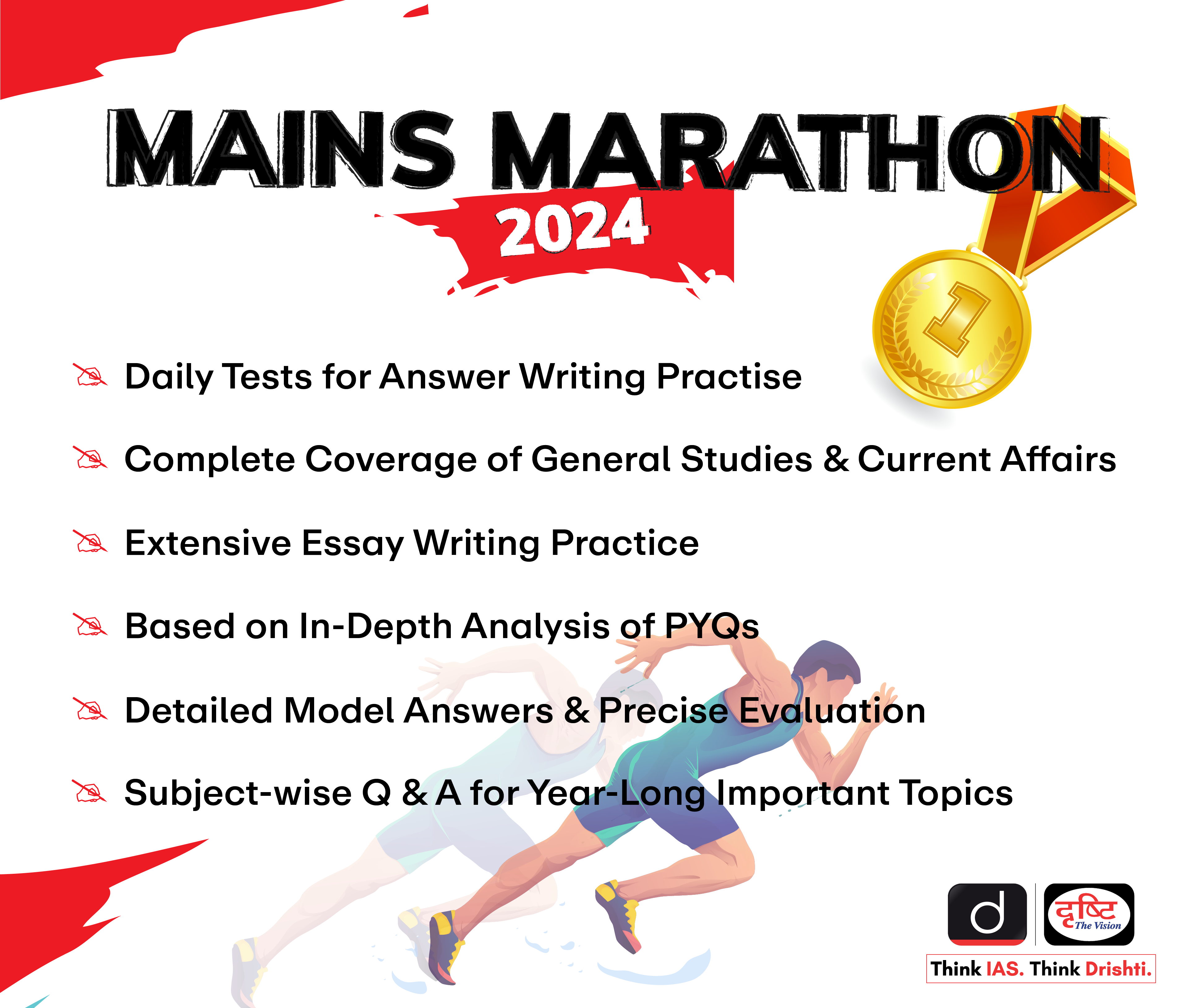
Indian Economy
Union Budget 2024-2025
For Prelims: Union Budget, Parliament, Pradhan Mantri Gram SadakYojana (PMGSY), Mudra loan, Interim Budget, Digital Public Infrastructure (DPI), India Post Payment Bank, Mudra loan, Vivad se Vishwas Scheme
For Mains: Significance of Parliament and Government Policies & Interventions for Indian Economy.
Why in News?
Recently, Union Budget 2024-25 was presented in the Parliament. It was the first general budget of the 18th Lok Sabha.
What are the Major Highlights of the Union Budget 2024-25?
- Focus Area:
- As outlined in the Interim Budget, the focus of the budget remains on four major groups: 'Garib' (Poor), 'Mahilayen' (Women), 'Yuva' (Youth), and 'Annadata' (Farmers) .
- Budget Theme:
- The Union Budget 2024-25 emphasises employment, skilling, support for MSMEs, and the middle class. A significant allocation of Rs 1.48 lakh crore is earmarked for education, employment, and skilling.
- Budget Priorities:
- The budget prioritizes nine areas including agriculture, employment, human resource development, manufacturing, services, urban development, energy security, infrastructure, innovation, research & development, and next-generation reforms.
- Priority 1: Productivity and Resilience in Agriculture:
- Measures include releasing new 109 high-yielding crop varieties, promoting natural farming among 1 crore farmers, establishing 10,000 need-based bio-input bio-input centres, and enhancing production, storage, and marketing of pulses and oilseeds (achieve‘atmanirbharta’ for oil seeds).
- A provision of Rs 1.52 lakh crore has been announced for agriculture and allied sectors this year.
- Government along with the states, will facilitate the implementation of the Digital Public Infrastructure (DPI) in agriculture for coverage of farmers and their lands in 3 years.
- Priority 2: Employment & Skilling:
- The budget introduces schemes like Employment Linked Incentive and initiatives to boost skilling with a focus on skilling 20 lakh youth over a 5-year period and upgrading 1,000 Industrial Training Institutes.
- Financial support for higher education and loans for skilling are also announced.
- The Model Skill Loan Scheme will be revised to facilitate loans up to Rs 7.5 lakh with a guarantee from a government promoted fund, which is expected to help 25,000 students every year.
- The budget introduces schemes like Employment Linked Incentive and initiatives to boost skilling with a focus on skilling 20 lakh youth over a 5-year period and upgrading 1,000 Industrial Training Institutes.
- Priority 3: Inclusive Human Resource Development and Social Justice:
- Enhanced support for economic activities among marginalised groups, including tribal communities and women entrepreneurs, is emphasized.
- The government's Purvodaya initiative aims to comprehensively develop the eastern region of India- including Bihar, Jharkhand, West Bengal, Odisha, and Andhra Pradesh, focusing on human resource development, infrastructure enhancement, and economic growth to advance towards a developed nation.
- The Finance Minister announced the launch of the Pradhan Mantri Janjatiya Unnat Gram Abhiyan to enhance the socio-economic conditions of tribal communities, covering 63,000 villages in tribal-majority areas and aspirational districts, benefiting approximately 5 crore tribal people.
- Over 100 branches of India Post Payment Bank will be established in the North East region to enhance banking services, alongside a provision of Rs 2.66 lakh crore allocated for rural development and infrastructure this year.
- Priority 4: Manufacturing & Services:
- The budget emphasises support for MSMEs, focusing on labour-intensive manufacturing, with a new self-financing guarantee fund offering up to Rs 100 crore per applicant.
- Public sector banks will enhance their internal assessment capabilities for MSME credit. Additionally, Mudra loan limits will increase to Rs 20 lakh for previous 'Tarun' category borrowers.
- The budget also includes initiatives like setting up 50 food irradiation units, establishing 100 food quality labs, and creating E-Commerce Export Hubs.
- Furthermore, a scheme for internships in 500 top companies aims to benefit 1 crore youth over 5 years.
- Priority 5: Urban Development:
- PM Awas Yojana Urban 2.0, has been allocated Rs 10 lakh crore to address housing needs of 1 crore urban poor and middle-class families, with Rs 2.2 lakh crore in central assistance over 5 years.
- The government will also collaborate with State Governments and Multilateral Development Banks to promote water supply, sewage treatment, and solid waste management in 100 large cities through bankable projects.
- Additionally, building on the success of PM SVANidhi, the government plans to establish 100 weekly street food hubs (haats) annually over the next five years.
- Priority 6: Energy Security:
- PM Surya Ghar Muft Bijli Yojana aims to install rooftop solar plants for free electricity to 1 crore households (up to 300 units every month).
- Nuclear energy is highlighted as a significant part of India's energy mix.
- Priority 7: Infrastructure:
- Government will try to maintain strong fiscal support for infrastructure over the next 5 years on this line Rs 11,11,111 crore for capital expenditure has been allocated this year, which is 3.4% of our GDP.
- Phase IV of Pradhan Mantri Gram Sadak Yojana (PMGSY) to connect 25,000 rural habitations with all-weather roads due to population growth has been announced.
- For Bihar, under the Accelerated Irrigation Benefit Programme and other sources, the government will allocate Rs 11,500 crore for projects like the Kosi-Mechi intra-state link and 20 other schemes including barrages, river pollution abatement, and irrigation.
- Additionally, financial assistance will be provided to Assam, Himachal Pradesh, Uttarakhand, and Sikkim for flood management, landslides, and related projects.
- Priority 8: Innovation, Research & Development:
- The government will establish the Anusandhan National Research Fund to support basic research and prototype development, allocating Rs 1 lakh crore to spur private sector-driven research and innovation at a commercial scale.
- To expand the space economy fivefold in the next decade, a venture capital fund of Rs 1,000 crore will be established.
- Priority 9: Next Generation Reforms:
- Plans for an Economic Policy Framework, labour reforms, and simplification of FDI regulations are outlined to spur economic growth.
- Jan Vishwas Bill 2.0 to improve Ease of Doing Business will be introduced by the government.
- Other Highlights:
- Economic Policy Framework:
- The government will formulate an Economic Policy Framework to guide economic development and reforms for enhancing employment.
- Labour related reforms:
- Implementing comprehensive labour reforms through integrated portals like e-shram portal, Shram Suvidha and Samadhan portals will be revamped to enhance ease of compliance for industry and trade.
- Government will come up with a taxonomy for climate finance for enhancing the availability of capital for climate adaptation and mitigation.
- Foreign Direct Investment and Overseas Investment:
- The rules and regulations for Foreign Direct Investment and Overseas Investments will be simplified to facilitate foreign direct investments, nudge prioritisation, and promote opportunities for using Indian Rupee as a currency for overseas investments.
- NPS Vatsalya
- A plan for contribution by parents and guardians for minors and on attaining the age of majority, the plan can be converted seamlessly into a normal NPS account.
- New Pension Scheme (NPS)
- A Committee to review the NPS has been constituted to addresses the relevant issues while maintaining fiscal prudence to protect the common citizens.
- Direct Tax Reforms: Comprehensive review and simplification of direct and indirect tax regimes are proposed.
- Changes include revised income tax slabs and deductions, simplification of tax compliance, and reforms in capital gains taxation.
- Custom Duty Reforms: Rationalization of GST and custom duty rates, exemptions for essential medicines and critical minerals, and measures to promote domestic manufacturing are highlighted.
- Dispute Resolution: Initiatives like Vivad se Vishwas Scheme, increased monetary limits for appeals, and measures to streamline transfer pricing assessments are aimed at reducing litigation and providing tax certainty.
- Economic Policy Framework:
Budget Estimates 2024-25
- For the year 2024-25, the total receipts other than borrowings and the total expenditure are estimated at Rs 32.07 lakh crore and Rs 48.21 lakh crore respectively.
- The net tax receipts are estimated at Rs 25.83 lakh crore and the fiscal deficit is estimated at 4.9% of GDP. Also, the government will aim to reach a deficit below 4.5% next year.
- The gross and net market borrowings through dated securities during 2024-25 are estimated at Rs 14.01 lakh crore and Rs 11.63 lakh crore respectively.
- Budget speech highlighted India's low and stable inflation moving towards the 4% target, with specific measures to ensure adequate supply of perishable goods.
|
Drishti Mains Question Discuss the constitutional provisions related to Budget in India. How does the constitutional framework ensure parliamentary control over financial matters and expenditure? |
UPSC Civil Services Examination, Previous Year Question (PYQ)
Prelims:
Q. Along with the Budget, the Finance Minister also places other documents before the Parliament which include ‘The Macro Economic Framework Statement’. The aforesaid document is presented because this is mandated by (2020)
(a) Long standing parliamentary convention
(b) Article 112 and Article 110(1) of the Constitution of India
(c) Article 113 of the Constitution of India
(d) Provisions of the Fiscal Responsibility and Budget Management Act, 2003
Ans: (d)
Mains:
Q. Distinguish between Capital Budget and Revenue Budget. Explain the components of both these Budgets. (2021)
Indian Polity
Demand for Bhil Pradesh
For Prelims: Govind Giri Banjara, Mangarh Hill, Bhili language, Panchayats (Extension to Scheduled Areas) Act, 1996, 14th Finance Commission, Sixth Schedule, Special Category Status, Autonomous Hill Development Councils
For Mains: Regional Aspirations, Sixth Schedule States, Demand for smaller states
Why in News?
Recently, the demand for a separate Bhil state, “Bhil Pradesh,” has been gaining momentum in Rajasthan and neighbouring states.
Who are Bhills and What are their Demands?
- About Bhills:
- Bhills are considered as one of the oldest tribe in India and identified as one of the Dravidian racial tribe of Western India belonging to Austroloid group of tribes.
- They are a cross section of great Munda race and a wild tribe of India and speak a language (Bhili) of Dravidian origin.
- Once they were the ruler in parts of Rajasthan, Gujarat, Malwa, Madhya Pradesh and Bihar.
- As per Census 2011, there are 1.7 crore Bhils across the country.
- Their largest concentration is in Madhya Pradesh at about 60 lakh, followed by 42 lakh in Gujarat, 41 lakh in Rajasthan and 26 lakh in Maharashtra.
- Bhills are Hindus by religion and appease deities of forest and evil spirits beside pujas of Lord Shiva and Durga.
- Bhills are considered as one of the oldest tribe in India and identified as one of the Dravidian racial tribe of Western India belonging to Austroloid group of tribes.
- Demand of Bhil Pradesh:
- The demand for Bhil Pradesh dates back to 1913 when Govind Giri Banjara, a tribal activist and social reformer, first called for a separate Bhil state during a mobilisation at Mangarh Hill.
- This was followed by a tragic massacre where British forces killed around 1,500 tribals.
- Over the decades, various tribal leaders, including political figures, have periodically revived this demand.
- The proposed Bhil Pradesh would cover 49 districts across four contiguous states including Rajasthan, Madhya Pradesh, Gujarat and Maharashtra. This would involve 12 districts from Rajasthan.
- The demand for Bhil Pradesh dates back to 1913 when Govind Giri Banjara, a tribal activist and social reformer, first called for a separate Bhil state during a mobilisation at Mangarh Hill.
- Reasons for the Demand:
- Cultural and Linguistic Homogeneity: The Bhil community shares a common language, Bhili, and cultural practices across the four states. Proponents argue that a separate state would better preserve and promote their cultural heritage.
- The Fazl Ali Commission also considered linguistic and cultural homogeneity as one of the factors for the formation of the new states.
- Geographic Considerations: The proposed Bhil Pradesh would encompass 49 districts across these four states, with significant tribal populations. This region has historical and cultural ties that transcend current state boundaries.
- Political Marginalisation: Tribal leaders claim that existing political structures have failed to adequately address the needs and aspirations of the Bhil community.
- A separate state is seen as a solution to ensure more focused governance and development.
- Developmental Focus: Proponents believe a separate state would lead to more tailored development policies and better utilisation of resources for tribal welfare.
- Historical neglect and slow implementation of laws like the Panchayats (Extension to Scheduled Areas) Act, 1996, highlight the need for more localised governance.
- Cultural and Linguistic Homogeneity: The Bhil community shares a common language, Bhili, and cultural practices across the four states. Proponents argue that a separate state would better preserve and promote their cultural heritage.
- Criticism of Demand:
- Critics argue that creating states based on caste or community could lead to further fragmentation and instability.
- The Fazl Ali Commission had opined that the unity of India should be regarded as the primary consideration in any redrawing of the country’s political units.
- There is also resistance from established political parties which have complex stakes in maintaining the status quo.
- Opponents argue that forming states based on tribal identity could exacerbate social divisions.
- Critics argue that creating states based on caste or community could lead to further fragmentation and instability.
What are the Other Regions Demanding Separate States?
- Vidarbha: It comprises the Amravati and Nagpur divisions of eastern Maharashtra. The State Reorganisation Act of 1956 recommended the creation of Vidarbha state with Nagpur as the capital.
- However, to alleviate the fear of neglect among Vidarbha people after its inclusion in Maharashtra state, Nagpur was designated as the second capital.
- The backwardness of the region due to the neglect of successive state governments is justified as the basis for the demand for a separate state of Vidarbha.
- Bodoland: The Bodos are the largest ethnic and linguistic community in northern Assam. The agitation for the creation of a separate Bodoland state resulted in an agreement in 2003 between the GoI, the Assam state government, and the Bodo Liberation Tigers Force.
- According to the agreement, Bodos were granted the Bodoland
- There have been demands from other quarters as well for separate states including Gorkhaland, Kukiland, and Mithila, etc.
What are the Issues Arising due to the Creation of New States?
- Different statehoods may lead to the hegemony of the dominant community/caste/tribe over their power structures.
- This can lead to the emergence of intra-regional rivalries among the sub-regions.
- The creation of new states may also lead to certain negative political consequences like a small group of legislators could make or break a government at will.
- There is also the possibility of an increase in inter-state water, power, and boundary disputes. For example disputes between Delhi and Haryana over water sharing.
- The division of states would require huge funds for building new capitals and maintaining a large number of Governors, Chief Ministers, Ministers, and administrators as the case in the division of Andhra Pradesh and Telangana
- The creation of smaller states only transfers power from the old state capital to the new state capital without empowering already existing institutions like Gram Panchayat, District Collector, etc. rather than diffusion of development in the backward areas of the states.
Way Forward
- The National Integration Council can be strengthened to deal with the challenges of regionalism.
- A high-powered commission can also be formed to assess the efficacy of existing laws & policies and propose necessary amendments to address the regional concerns.
- The 73rd and 74th Constitutional Amendments provided a strong foundation for Panchayati Raj and Urban Local Bodies. Strengthening these institutions through capacity building, financial empowerment, and constitutional safeguards can be more effective.
- Finance Commission’s recommendations can be used as a benchmark for equitable distribution. Additionally, mechanisms for efficient resource utilization, such as performance-based budgeting, need to be strengthened.
- A Special Package, similar to the one provided to Telangana after its creation and tailored to specific regional needs, can be designed.
- Economic parameters like per capita income, infrastructure index, and human development indicators can be used to identify deserving regions.
- The NITI Aayog's Aspirational Districts Programme focuses on underdevelopment. Similar programs can be launched for regions demanding statehood.
- The Inter-State Council provides a platform for center-state dialogue. Similar mechanisms can be created at the regional level.
- Initiatives like the National Cultural Fund and the Sahitya Akademi support cultural preservation. Region-specific programs, including language promotion and cultural festivals, can be expanded.
|
Drishti Mains Question: Q. Analyse the increasing demands for the creation of new states in India. Discuss the implications of these demands on federalism. |
UPSC Civil Services Examination, Previous Year Question (PYQ)
Prelims:
Q1. Which of the following provisions of the Constitution of India have a bearing on Education? (2012)
- Directive Principles of State Policy
- Rural and Urban Local Bodies
- Fifth Schedule
- Sixth Schedule
- Seventh Schedule
Select the correct answer using the codes given below:
(a) 1 and 2 only
(b) 3, 4 and 5 only
(c) 1, 2 and 5 only
(d) 1, 2, 3, 4 and 5
Ans: (d)
Q2. Under which Schedule of the Constitution of India can the transfer of tribal land to private parties for mining be declared null and void? (2019)
(a) Third Schedule
(b) Fifth Schedule
(c) Ninth Schedule
(d) Twelfth Schedule
Ans: (b)
Mains:
Q.1. How far do you think cooperation, competition and confrontation have shaped the nature of federation in India? Cite some recent examples to validate your answer. (2020)
Q.2.Though the federal principle is dominant in our constitution and that principle is one of its basic features, but it is equally true that federalism under the Indian Constitution leans in favour of a strong Center, a feature that militates against the concept of strong federalism. Discuss. (2014)
Governance
RSS: A Non-Political Organization
For Prelims: About Rashtriya Swayamsevak Sangh (RSS), History, Related facts, Political Organisations, Emergency.
For Mains: Implications of Lifting Ban on RSS activities for government employees and related issues.
Why in News?
Recently, the Indian government officially lifted a ban that prevented public servants from participating in the activities of the Rashtriya Swayamsevak Sangh (RSS).
- This decision, issued by the Department of Personnel and Training (DoPT), removed references to the RSS from official memorandums dating back to 1966, 1970, and 1980.
Note:
- This circular is only for central government employees.
- State governments have their own Conduct Rules for their employees, and issue such instructions from time to time.
What does the Rules Say on Government Employees Joining RSS?
- DoPT’s Directive:
- On 9th July 2024, the DoPT announced the removal of references to the RSS from Official Memorandums (OM) issued in 1966, 1970, and 1980.
- The RSS is no longer considered a "political" organisation, allowing central government employees to participate in its activities without penalties under Rule 5(1) of the Conduct Rules.
- However, this reclassification does not apply to the Jamaat-e-Islami, which remains a political organisation, prohibiting government officials from engaging in its activities.
- Rule 5 of the Central Civil Services (Conduct) Rules, 1964 prohibits government servants from being associated with political parties or engaging in political activities.
- Official Memorandums (OM) of 1966, 1970, and 1980:
- OM of 1966: On 30th November 1966, the Ministry of Home Affairs (MHA) issued a circular clarifying its stance on government employees' involvement with the RSS and Jamaat-e-Islami, labelling participation in these organisations as contrary to government policy.
- The circular referenced Rule 5 of the Central Civil Services (Conduct) Rules, 1964 and stated that those involved with these groups could face disciplinary action.
- A similar rule is present in the All India Services (Conduct) Rules, 1968, applicable to IAS, IPS, and Indian Forest Service officers.
- OM of 1970: On 25th July 1970, the MHA stressed that government employees should face disciplinary action for violating the instructions issued on 30th November 1966.
- During the Emergency (1975 to 1977) government issued directives for action against members of various groups, including the RSS, Jamaat-e-Islami, Ananda Marg, and CPI-ML, whose activities were prohibited at that time.
- OM of 1980: On 28th October 1980, government issued a directive emphasising the importance of maintaining a secular perspective among government employees and highlighted the critical need to eliminate communal sentiments and biases.
- OM of 1966: On 30th November 1966, the Ministry of Home Affairs (MHA) issued a circular clarifying its stance on government employees' involvement with the RSS and Jamaat-e-Islami, labelling participation in these organisations as contrary to government policy.
- Position Before 1966:
- Prior to 1966, government employees in India were governed by the Government Servants’ Conduct Rules of 1949, which explicitly prohibited participation in political activities.
- This prohibition was reiterated in Rule 23 of the 1949 rules, aligning with Rule 5 of the Central Civil Services (Conduct) Rules, 1964, and the All India Services (Conduct) Rules, 1968.
- Penalty for Violations of Rules:
- Violations of these rules (Rule 5 of the Central Civil Services (Conduct) Rules, 1964, and the All India Services (Conduct) Rules, 1968) can lead to serious consequences, including dismissal from service.
- Both rules state that if there's any uncertainty about a party's political involvement or an activity's compliance, the government's decision is final.
What is Rashtriya Swayamsevak Sangh (RSS)?
- About:
- The Rashtriya Swayamsevak Sangh (RSS) is a Hindu nationalist volunteer organisation founded in 1925 in Nagpur by Dr. K.B. Hedgewar in response to perceived threats to Hindu culture and society, particularly during British colonial rule.
- It aims to promote the idea of Hindutva, which emphasises Hindu cultural and national identity.
- Pre-Independence Era:
- The organization played a significant role in social and cultural mobilisation among Hindus. It focused on community service, education, and the promotion of Hindu values.
- Post-Independence:
- After India's independence in 1947, the RSS faced scrutiny, especially after the assassination of Mahatma Gandhi by Nathuram Godse in 1948. The organisation was banned for a short period but was later reinstated.
- Ideology:
- The central ideology of the RSS, articulated by Vinayak Damodar Savarkar, promotes the idea that India is fundamentally a Hindu nation.
- The RSS emphasises the importance of Indian culture and heritage, aiming to unite people under a common national identity.
- The organization engages in various social service activities, including education, health care, and disaster relief, promoting the idea of "Seva" (service) among its members.
- Contribution to Freedom Struggle:
- RSS did not participate directly in the Indian independence movement, it contributed to the socio-political awakening of Hindus.
- History of Ban of RSS:
- 1948: Banned after Gandhi's assassination; lifted in 1949 after pledging loyalty to the Constitution.
- 1966: Government employees banned from joining RSS, reiterated in 1970 and 1980.
- 1975-1977: Banned during Indira Gandhi's Emergency; lifted in 1977.
- 1992: Banned post-Babri Masjid demolition, lifted in 1993 after a commission deemed the ban unjustified.
- Structure and Functioning:
- The RSS operates through a network of shakhas (branches) across India and abroad, focusing on physical, intellectual, and cultural training.
- It has inspired many other organizations, including the Vishva Hindu Parishad (VHP), Bajrang Dal, and Akhil Bharatiya Vidyarthi Parishad (ABVP).
- Political Influence: It is considered the ideological parent of the Bharatiya Janata Party (BJP), which has been a major political force in India since the 1990s.
Jamaat-e-Islami
- It is a socio-religious and political organization that was founded in 1941 in British India by Abul A'la Maududi.
- It aims to promote Islamic values and implement Islamic principles in society and governance.
- It advocates for the establishment of an Islamic state governed by Sharia law.
- The Government of India officially banned Jamaat-e-Islami Jammu and Kashmir in March 2019 under the Unlawful Activities (Prevention) Act (UAPA).
Ananda Marg:
- It was founded by Prabhat Ranjan Sarkar in 1955, is a socio-spiritual organisation known for its Progressive Utilisation Theory (Prout).
- Prout is a socioeconomic alternative model that promotes the welfare and development of every person, physically, mentally, and spiritually.
- It gained popularity in the 1960s, leading to conflicts with the West Bengal government. Key events include the 1975 assassination of railway minister L N Mishra, for which four members were convicted, and Anandamurti's 1971 arrest for allegedly ordering a disciple's murder.
- It was banned during the Emergency (1975-1977).
|
Drishti Mains Question: Discuss the role of political organisations and pressure groups in the Indian freedom struggle. How did these entities influence the course of the movement and contribute to the eventual independence of India? |
UPSC Civil Services Examination, Previous Year Question (PYQ)
Prelims
Q1. Who among the following is associated with ‘Songs from Prison’, a translation of ancient Indian religious lyrics in English? (2021)
(a) Bal Gangadhar Tilak
(b) Jawaharlal Nehru
(c) Mohandas Karamchand Gandhi
(d) Sarojini Naidu
Ans: (c)
Q2. With reference to the British colonial rule in India, consider the following statements: (2019)
- Mahatma Gandhi was instrumental in the abolition of the system of ‘indentured labour’.
- In Lord Chelmsford’s ‘War Conference’, Mahatma Gandhi did not support the resolution on recruiting Indians for World War.
- Consequent upon the breaking of Salt Law by Indian people, the Indian National Congress was declared illegal by the colonial rulers.
Which of the statements given above are correct?
(a) 1 and 2 only
(b) 1 and 3 only
(c) 2 and 3 only
(d) 1, 2 and 3
Ans: (b)
Mains
Q. Bring out the constructive programmes of Mahatma Gandhi during Non-Cooperation Movement and Civil Disobedience Movement. (2021)
Q. The banning of 'Jamaat-e — Islamic' in Jammu and Kashmir brought into focus the role of over- ground workers (OGWs) in assisting terrorist organizations. Examine the role played by OGWs in assisting terrorist organizations in insurgency affected areas. Discuss measures to neutralize the influence of OGWs. (2019)
Important Facts For Prelims
Assam's Moidams to be Considered for World Heritage List
Why in News?
Recently, the 'Moidams’ of Ahom dynasty have been proposed for inclusion in the World Heritage Sites list during the 46th session of the World Heritage Committee.
- India will host this session for the first time in July 2024 in New Delhi.
- Currently, UNESCO's World Heritage list includes 1,199 properties from 168 countries.
What were Moidams?
- The Moidams represent the late medieval (13th-19th century CE) mound burial tradition of the Tai Ahom Dynasty of Assam.
- These were primarily constructed using earth, bricks, and stone. The outer structure typically consisted of a mound of earth, often surrounded by a brick or stone wall.
- They are the resting place of royal families in Assam’s Charaideo district.
- It enshrines the mortal remains of the members of the Ahom royalty, who used to be buried with their paraphernalia.
- After the 18th century, the Ahom rulers adopted the Hindu cremation method and began entombing the cremated bones and ashes in a Maidam at Charaideo.
- These burial systems of the Ahom dynasty are comparable to the royal tombs of ancient China and the Pyramids of the Egyptian Pharaohs.
What are the Key Facts About Ahom Kingdom?
- About:
- The Ahom kingdom was established in 1228 in Assam's Brahmaputra valley and maintained its sovereignty for 600 years.
- It was founded by the 13th-century ruler Chaolung Sukapha in 1253.
- Charaideo was their initial capital, located over 400 km east of Guwahati.
- The Ahom dynasty ruled for approximately 600 years until Assam was annexed by the British in 1826 through the Treaty of Yandaboo.
- Political Setup:
- Ahoms created a new state by suppressing the older political system of the bhuiyans (landlords).
- The state depended upon forced labour, known as paiks.
- Society:
- Ahom society was divided into clans or khels. A khel often controlled several villages.
- Ahoms worshipped their own tribal gods, yet they accepted the Hindu religion and the Assamese language.
- However, the Ahom kings did not completely give up their traditional beliefs after adopting Hinduism.
- Military Strategy:
- The full contingent of the Ahom Army consisted of infantry, navy, artillery, elephantry, cavalry and spies.
- The main war weapons consisted of bows and arrows, swords, Javelins, discus, guns, match-locks and cannons.
- The Ahom soldiers were experts in guerilla fighting. They also learnt the technique of constructing boat bridges in the Brahmaputra.
- The Ahom navy, led by Lachit Borphukan, defeated the Mughal forces commanded by Ram Singh I during the reign of Aurangzeb at the Battle of Saraighat in 1671.
- The Lachit Borphukan gold medal is awarded to the best cadet from the National Defence Academy.
- The medal was instituted in 1999 to inspire defence personnel to emulate Borphukan’s heroism and sacrifices.
- The Lachit Borphukan gold medal is awarded to the best cadet from the National Defence Academy.
- The full contingent of the Ahom Army consisted of infantry, navy, artillery, elephantry, cavalry and spies.
What are UNESCO’s World Heritage Sites?
- A World Heritage Site is a place that is listed by UNESCO for its special cultural or physical significance.
- The list of World Heritage Sites is maintained by the international 'World Heritage Programme', administered by the UNESCO World Heritage Committee.
- This is embodied in an international treaty called the Convention concerning the Protection of the World Cultural and Natural Heritage, adopted by UNESCO in 1972.
- India has 42 World Heritage Sites (34 cultural, 7 natural, and 1 mixed site). The latest additions are Santiniketan (2023) and the Sacred Ensembles of the Hoysalas (2023).
UPSC Civil Services Examination, Previous Year Question (PYQ)
Prelims:
Q. Which one of the following National Parks has a climate that varies from tropical to subtropical, temperate and arctic? (2015)
(a) Khangchendzonga National Park
(b) Nandadevi National Park
(c) Neora Valley National Park
(d) Namdapha National Park
Ans: (d)
Mains:
Q. What was the difference between Mahatma Gandhi and Rabindranath Tagore in their approach towards education and nationalism? (2023)
Important Facts For Prelims
Mid-Year Air Quality Assessment for India: CREA
Why in News?
Recently, the mid-year air quality assessment for India by the Centre for Research on Energy and Clean Air (CREA), covering the period from January to June 2024, provides a comprehensive overview of the nation's air pollution levels.
- This report highlights the severity and distribution of air pollution across Indian cities, emphasising the importance of stringent measures to combat this environmental crisis.
What are the Key Highlights of the Reports?
- Key Highlights:
- Byrnihat, located on the Assam-Meghalaya border, emerged as the most polluted city in India, with an average PM2.5 concentration of 140 µg/m³(Micrograms per Cubic Metre).
- Among India's top 10 polluted cities, three were in Haryana, two each in Rajasthan and Uttar Pradesh, and one each in Delhi, Assam, and Bihar.
- Delhi ranked as the 3rd most polluted city, with PM2.5 levels at 102 µg/m³, exceeding the National Ambient Air Quality Standards (NAAQS) and World Health Organization (WHO) guidelines.
- Out of 256 cities monitored, 163 exceeded the annual NAAQS (40 µg/m³), while all exceeded the WHO standard (5 µg/m³).
- Among the 97 National Clean Air Programme (NCAP) cities, 63 exceeded the NAAQS.
- Only 63 out of 163 cities exceeding the NAAQS are part of the NCAP, leaving 100 cities without action plans to reduce air pollution.
- The top 10 most polluted cities were spread across 16 states and union territories, indicating the widespread nature of air pollution in India.
- Six new Continuous Ambient Air Quality Monitoring Stations (CAAQMS) were added, increasing the total to 545.
- Karnataka and Maharashtra had the highest number of cities under the "Good" and "Satisfactory" categories, while Bihar had the most cities in the "Moderate" category.
- Implications:
- The high PM2.5 levels in Byrnihat and Delhi underscore the urgent need for localised pollution control measures.
- The prevalence of pollution in states like Haryana and Rajasthan calls for coordinated regional efforts to tackle air quality issues.
- The fact that 100 cities exceeding the NAAQS are not covered under the NCAP highlights a significant gap in India's air quality management framework.
- Expanding the NCAP to include these cities is crucial for comprehensive air pollution control.
- Chronic exposure to high levels of PM2.5 has severe health implications, including respiratory and cardiovascular diseases.
- The report's findings stress the need for public health interventions and awareness programs.
- The increase in CAAQMS is a positive step, but the data gaps and non-operational stations highlight the need for enhanced monitoring infrastructure and maintenance.
- The high PM2.5 levels in Byrnihat and Delhi underscore the urgent need for localised pollution control measures.
- Policy Recommendations: Strengthening emission standards, promoting green technologies, and enhancing public transportation can significantly reduce pollution levels.
- Community participation and stringent enforcement of environmental laws are essential for sustainable air quality improvements.
Initiatives Taken for Controlling Air Pollution
- National Clean Air Programme (NCAP)
- Bharat Stage Emission Standards
- Solid Waste Management Rules,2016
- System of Air Quality and Weather Forecasting and Research (SAFAR) Portal
- Air Quality Index
- Graded Response Action Plan
- National Air Quality Monitoring Programme (NAMP)
- Commission for Air Quality Management
UPSC Civil Services Examination, Previous Year Question (PYQ)
Prelims:
Q. In the cities of our country, which among the following atmospheric gases are normally considered in calculating the value of the Air Quality Index? (2016)
- Carbon dioxide
- Carbon monoxide
- Nitrogen dioxide
- Sulphur dioxide
- Methane
Select the correct answer using the code given below:
(a) 1, 2 and 3 only
(b) 2, 3 and 4 only
(c) 1, 4 and 5 only
(d) 1, 2, 3, 4 and 5
Ans: (b)
Mains
Q. Describe the key points of the revised Global Air Quality Guidelines (AQGs) recently released by the World Health Organisation (WHO). How are these different from its last update in 2005? What changes in India’s National Clean Air Programme are required to achieve revised standards? (2021)
Rapid Fire
Sindhu-Sarasvati Civilisation and Ujjayini Meridian
The new NCERT incorporates several changes from the previous textbooks. The textbook aims to align with the National Curriculum Framework for School Education 2023 and the National Education Policy 2020, emphasising the integration of traditional Indian knowledge and a thematic approach to social science education.
Changes in NCERT Textbooks:
- The textbook refers to the Harappan civilization as the 'Indus-Sarasvati' or 'Sindhu-Sarasvati' civilisation, highlighting the prominence of the Sarasvati river.
- It mentions that the Sarasvati River, now known as the Ghaggar-Hakra River, was a major part of the Harappan civilization and that its desiccation contributed to the decline of the civilization.
- Long before the adoption of the Greenwich Meridian, India had its prime meridian, known as the "Madhya rekha" (or "middle line"), which passed through the city of Ujjain.
- The textbook introduces the concept of the 'Ujjayini meridian', an ancient prime meridian of India, which was used for astronomical calculations.
- Other Changes in Structure and Content:
- The new textbook is a single volume covering five themes, unlike the previous separate textbooks for History, Political Science, and Geography.
- It aims to present a more integrated and interdisciplinary approach to social science education.
- The chapter on diversity has shifted its focus, with less emphasis on caste-based discrimination and inequality compared to the previous textbook.
- The new textbook is a single volume covering five themes, unlike the previous separate textbooks for History, Political Science, and Geography.
Read More: National Education Policy 2020, National Curriculum Framework for School Education 2023
Rapid Fire
Chandra Shekhar Azad Birth Anniversary
Recently, the Prime Minister paid tributes to Chandra Shekhar Azad on his birth anniversary, 23rd July 2024. He was a popular Indian leader and revolutionary, who fought valiantly for Indian independence.
- He was born on 23rd July 1906 in the Alirajpur district of Madhya Pradesh.
- As a 15-year-old student, joined the Non-Cooperation Movement in December 1921.
- After the suspension of the non-cooperation movement in 1922 by Gandhi, Azad joined Hindustan Republican Association (HRA).
- HRA was a revolutionary organization, established in 1924 in Kanpur by Sachindra Nath Sanyal, Ram Prasad Bismil, and Jogesh Chandra Chatterjee, to organise an armed revolution to overthrow the colonial government.
- Members were Bhagat Singh, Chandra Shekhar Azad, Sukhdev, Roshan Singh, Ashfaqulla Khan, and Rajendra Lahiri.
- HRA was later reorganised as the Hindustan Socialist Republican Army (HSRA).
- It was established in 1928 at Feroz Shah Kotla in New Delhi by Chandra Shekhar Azad, Ashfaqulla Khan, Bhagat Singh, Sukhdev Thapar and Jogesh Chandra Chatterjee.
- Chandra Shekar Azad was also involved in the conspiracy to blow up Lord Irwin's train in 1929.
- He was martyred at Azad Park in Allahabad on 27th February 1931.
Read More: Azad's Revolutionary Activities and Guerrilla Warfare Tactics
Rapid Fire
GeM Learning Management System
Recently, Government e Marketplace’s (GeM) e-learning Training Courses has been made available in 12 Official Languages.
- Introduced in 2024, the Government e Marketplace (GeM) Learning Management System (LMS) represents an innovative initiative by the government.
- The GeM-LMS is an important knowledge repository designed with a user-centric approach, offering a comprehensive platform for users and trainers, supporting various intermediate processes such as registration, training, certification.
- GeM has expanded its interactive and user-friendly LMS to include six more official languages, making this learning platform accessible in a total of twelve official languages of India.
Government e Marketplace (GeM):
- GeM is a 100% Government owned and National Public Procurement Portal that facilitates online procurement of common use Goods & Services required by various Government Departments / Organisations / PSUs.
- The initiative was launched by the Ministry of Commerce and Industry in 2016.
- It provides the tools of e-bidding, reverse e-auction and demand aggregation to facilitate the government users, achieve the best value for their money and aims to enhance transparency, efficiency and speed in public procurement.
Read more: Government e-Marketplace
Rapid Fire
Primary Amoebic Meningoencephalitis
Kerala has issued technical guidelines for the diagnosis, management, and prevention of Primary amoebic meningoencephalitis (PAM) following recent cases of this rare but fatal infection.
- The Kerala Health Department has introduced SOPs for handling acute meningitis cases, potentially the first set of guidelines in India for this rare infection. The amoebic parasite Naegleria fowleri was identified in most cases, with Vermamoeba vermiformis implicated in one case.
- Disease Characteristics: PAM is caused by Naegleria fowleri, free-living amoebae in warm, stagnant freshwater and has a high mortality rate (>97%).
- Known as the “brain-eating amoeba,” it infects the brain through the nasal passages, leading to severe brain tissue destruction.
- Children are particularly vulnerable, though PAM does not spread from person to person or through swallowing contaminated water.
- Symptoms and Diagnosis: Symptoms include headache, fever, nausea, and vomiting. PAM diagnosis is challenging and often mistaken for bacterial meningitis.
- Bacterial meningitis is an infection of the meninges, which is the protective covering for the brain and spinal cord resulting in inflammation. It is a serious and life-threatening condition.
- Treatment: Early diagnosis and timely initiation of an antimicrobial cocktail are crucial. The optimal drug regimen is still uncertain, and treatment involves a multidisciplinary team.
- Prevention Measures: Avoid exposure to stagnant freshwater, use nose plugs, and ensure proper chlorination and maintenance of swimming pools to prevent PAM.
- Vermamoeba vermiformis is a free-living amoeba found in natural and man-made environments, including freshwater sources.
- It can host various pathogens and is linked to opportunistic diseases such as encephalitis and epithelial disorders.
Read more: Naegleria fowleri: The "Brain-Eating Amoeba"
Rapid Fire
Fungi- Mushroom
Recently, a study showed that the ingestion of psilocybin, the hallucinogenic compound present in magic mushrooms, results in a temporary reset of extensive neuron networks in the brain responsible for regulating an individual's perception of time and self.
- Mushrooms are fungi that typically have a stem, a cap, and gills.
- They are classified as fungi because they lack chlorophyll and cannot produce their food through photosynthesis.
- The fungi constitute a unique kingdom of heterotrophic organisms.
- They are a diverse group of eukaryotic microorganisms or macroscopic organisms that belong to their biological kingdom, distinct from plants, animals, and bacteria.
- Except for unicellular yeasts, fungi are filamentous.
- Fungi have beneficial applications such as yeast in baking and brewing, antibiotic production like penicillin, and culinary uses.
- Fungi prefer to grow in warm and humid places.
- Reproduction in fungi can take place by vegetative means (fragmentation, fission and budding), asexual reproduction (by spores) and sexual reproduction.
- Fungi play a crucial role in preserving the equilibrium of our ecosystem through several key functions like Decomposition, Symbiosis, and Soil enrichment.
Read more: Ganoderma Lucidum: Magical Mushroom

